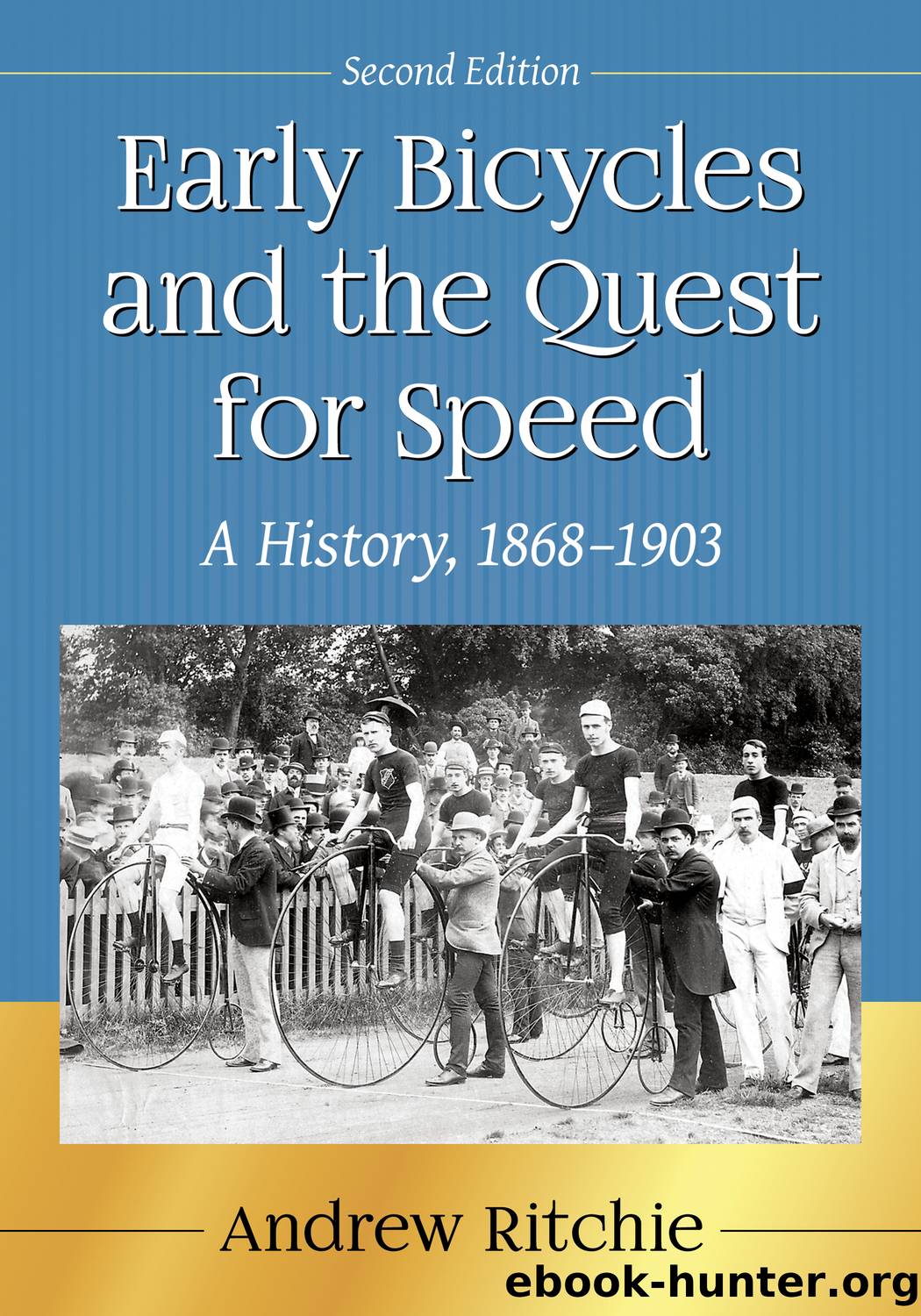Early Bicycles and the Quest for Speed by Ritchie Andrew

Author:Ritchie, Andrew
Language: eng
Format: epub
Publisher: McFarland & Company, Inc.
Published: 2018-03-22T00:00:00+00:00
Fig. 6.14. L.D. (Birdie) Munger set records on American roads in the midâ1880s. [Source: John L. Weiss collection]
Fig. 6.15. Prominent advertising to âboomâ records set in road races appeared from the 1880s on in the United States, as in the case of the Clarkeville Road race, âthe greatest bicycle race ever since cycling began.â [Source: Bicycling World, 24 June 1887]
Road racing on the high-wheel bicycle was a tough and demanding sport, practised by youthful male club members in the 1880s.79 A large number of high-wheel road records were set and reported in the press, although authenticating the results was always a difficult issue. The League of American Wheelmen initially did not hesitate to sanction road racing and approve records, and it was only later that a debate began within the L.A.W. over the image of road racing. âThe Road Race is becoming a popular institution,â wrote the editor of Bicycling World in 1885, âWe do not ⦠get as good time, nor is there the excitement that there is in a race where the riders are in sight the whole distance, but we get a test of machines built for service and under conditions that they are likely to meet with in ordinary use; and we get a test of the abilities of the riders on the roads.â At the same time, the paper recognized that âthe thing is in violation of the law and can only be pursued under the indulgence of the authorities,â and that âin the hands of irresponsible men, a great deal of injury will be done.â80
When L.D. (Birdie) Munger, a Detroit rider who was later to become Major Taylorâs mentor and trainer, set a record of 211½ miles in 24 hours over New England roads in August 1885, he took great pains to establish its authenticity. âPace-makers accompanied him the whole distance and he was never alone,â reported Bicycling World, âThe distance was measured by a Butcher cyclometer, which had previously been tested at the machine shop of the Butcher Cyclometer Co. Postals (i.e., postcards) were mailed by Munger from all the towns passed through to this office, and they substantiate the presence of Munger in each.â Munger also mailed âpostalsâ to Abbott Bassett, Chairman of the Racing Board of the L.A.W.81 The level of competition that already existed in the midâ1880s is suggested by Mungerâs record-setting margin of only 4 miles over the previous holder, F.S. Cook, from California, with 207 miles.
Road conditions were variable, and at their worst, terrible. Munger had to contend with ârough and sandy stretches through Essex County,â and âa heavy white mist which rose from the marshes and made it impossible to distinguish objects ten feet distant.â82 The New England roads were rougher and sandier than British roads at this time, which perhaps explains why Mungerâs record mileage was more than 50 miles short of the then current British record of 266 miles for 24 hours set by J.H. Adams on 4 October 1884, though the less developed competitive structure in the U.
Download
This site does not store any files on its server. We only index and link to content provided by other sites. Please contact the content providers to delete copyright contents if any and email us, we'll remove relevant links or contents immediately.
| Bike Repair | Excursion Guides |
| Mountain Biking |
Shoe Dog by Phil Knight(5139)
The Rules Do Not Apply by Ariel Levy(4846)
Walking by Henry David Thoreau(3892)
How to Read Water: Clues and Patterns from Puddles to the Sea (Natural Navigation) by Tristan Gooley(3406)
Running Barefoot by Amy Harmon(3396)
I'll Give You the Sun by Jandy Nelson(3357)
Crazy Is My Superpower by A.J. Mendez Brooks(3329)
How to Read Nature by Tristan Gooley(3249)
How Music Works by David Byrne(3184)
The Boy, the Mole, the Fox and the Horse by Charlie Mackesy(2998)
The Fight by Norman Mailer(2847)
Seducing Cinderella by Gina L. Maxwell(2604)
Cuba by Lonely Planet(2577)
Accepted by Pat Patterson(2302)
Going Long by Editors of Runner's World(2295)
The Unfettered Mind: Writings from a Zen Master to a Master Swordsman by Takuan Soho(2249)
Backpacker the Complete Guide to Backpacking by Backpacker Magazine(2193)
The Happy Runner by David Roche(2193)
Trail Magic by Trevelyan Quest Edwards & Hazel Edwards(2125)
